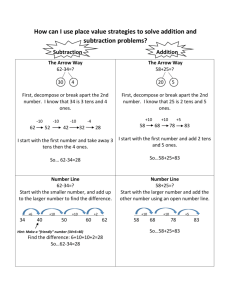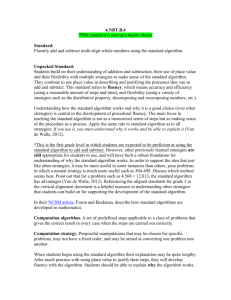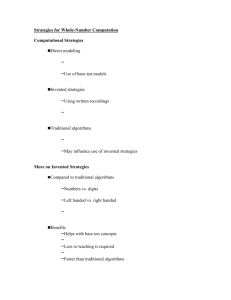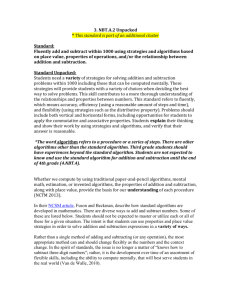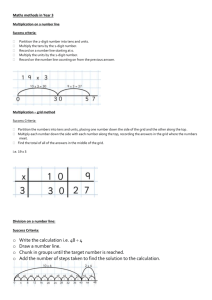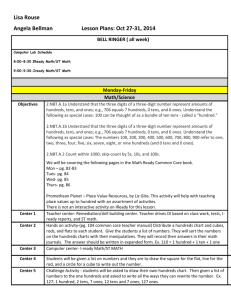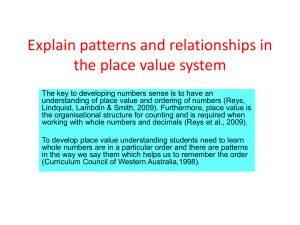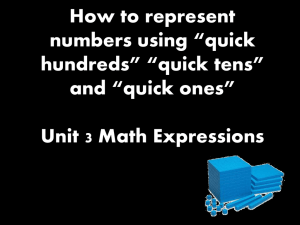Standard 2.NBT.B.7
advertisement
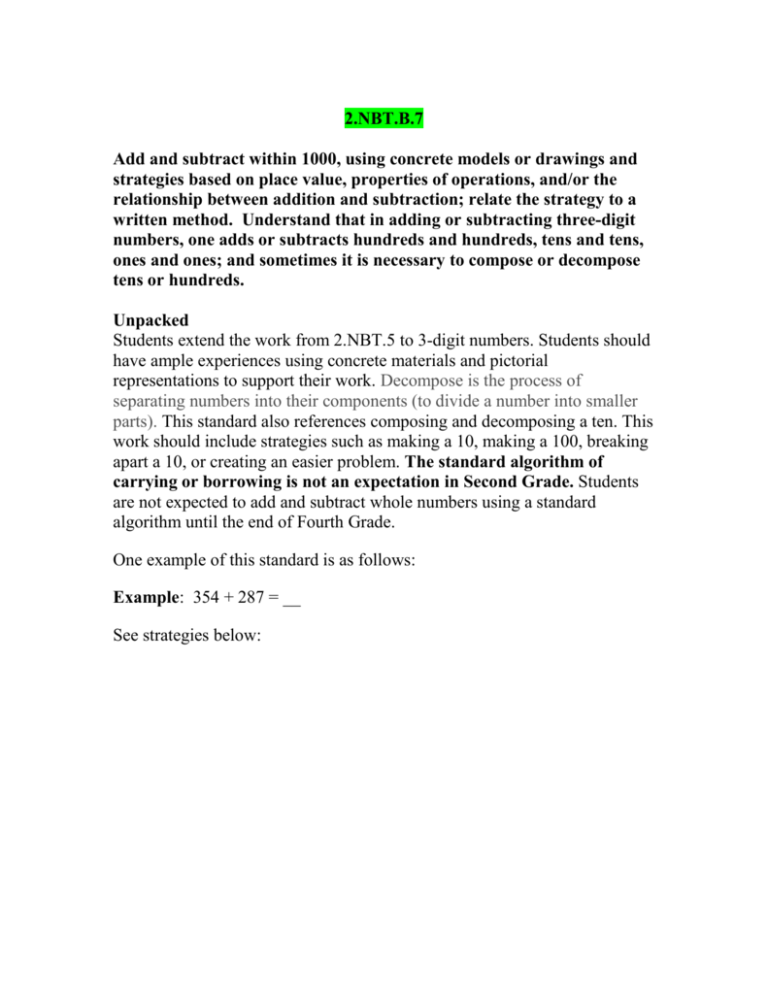
2.NBT.B.7 Add and subtract within 1000, using concrete models or drawings and strategies based on place value, properties of operations, and/or the relationship between addition and subtraction; relate the strategy to a written method. Understand that in adding or subtracting three-digit numbers, one adds or subtracts hundreds and hundreds, tens and tens, ones and ones; and sometimes it is necessary to compose or decompose tens or hundreds. Unpacked Students extend the work from 2.NBT.5 to 3-digit numbers. Students should have ample experiences using concrete materials and pictorial representations to support their work. Decompose is the process of separating numbers into their components (to divide a number into smaller parts). This standard also references composing and decomposing a ten. This work should include strategies such as making a 10, making a 100, breaking apart a 10, or creating an easier problem. The standard algorithm of carrying or borrowing is not an expectation in Second Grade. Students are not expected to add and subtract whole numbers using a standard algorithm until the end of Fourth Grade. One example of this standard is as follows: Example: 354 + 287 = __ See strategies below: Invented Strategies: * noting the observation above in regard to teaching algorithms, student invented strategies are an important and strategic progression into the direct instruction/introduction of algorithms. Invented strategies are developed out of a strong understanding of numbers. The standard development of place value often leaves students ill prepared for the challenges of inventing computational strategies. For example, some third and fourth-grade students have difficulty naming a number that is ten more or ten less than a given two-digit number. Therefore, students need a classroom environment were they can act like mathematicians and explore ideas without trepidation. Here are some factors to keep in mind: Expect and encourage student to student interactions, discussions, and conjectures Celebrate when students clarify previous knowledge Encourage curiosity and an open mind when trying new things Talk about both right and wrong ways in a non-evaluative or threatening way Move unsophisticated ideas to more sophisticated thinking through coaxing, coaching, and guided questioning Use contexts and story problems to capture student interest Consider carefully whether you should step in or step back when students are formulating new ideas (when in doubt-step back) (Van de Walle, 2010) The Launch Explore Summarize lesson is a good structure for an invented strategies lesson, because students are encouraged to explore and share their thinking with their peers. Invented Addition Strategies Problems involving the sum of 2 or more digits will provoke a wide variety of strategies. One way may be a strategy that involve starting with one or the other number and working from that point, either by adding on to get the next ten or by adding tens, hundreds, thousands etc. from one number to the other. Other approaches involve decomposing or splitting the numbers in parts and adding the easier parts separately. Example: 46 + 35 A student may add four more to 46 to get fifty, and then add 31 to fifty. A student might first add 30 to 46 and then add 4 more to get 80 and 1 more. A student might first decompose the numbers into tens and ones, and then add. 40 + 6 + 30 + 5, and then rearrange the order to 40 + 30 = 70 and 6 + 5 = 11, therefore 70 + 11 = 81 One example of an invented strategy: Invented Subtraction Strategies Subtracting by Counting Up: This strategy is very powerful for many expressions, but not appropriate for all. An example would be for 38-19 the idea is to think, “How much do I add to 19 to get 38?” The following problem and those like it lend themselves to be solved using “counting up.” Simply asking for the difference between two numbers may also prompt this strategy (Van de Walle). Jennifer counted all of her markers. Some of them worked and some did not. She had 68 markers in all. 36 of the markers did work. How many do not work? The following examples illustrate this problem. Add Tens to Get Close, Then Ones 68-36 36+30 (40 is too much) Then add two more is 68. That’s 30 and 2 or 32. Add Ones to Make a Ten, Then Tens and Ones 68-36 36 and 4 is 40. 40 and 20 is 60. 8 more is 68. 4+20=24 24+8=32 Take-Away Subtraction: When the subtracted number is a multiple of ten or close to a multiple of ten or close to a multiple of ten, take-away can be an easy method to use (Van de Walle, 2010). Example: There were 63 students in the cafeteria. The 48 students who finished their lunch went out to recess. How many children are still in the cafeteria? The following examples illustrate this problem: Take Tens from the Tens, then subtract Ones 63-48 60-40 is 20 Then take away 8 more is 12 Now add back 3 ones is 15 Take Away Tens, Then Ones 63-48 63- 40= 23 Then take away 8 more. 23-8=15

